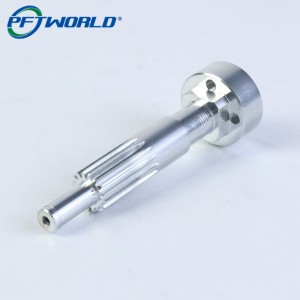custom machined brass parts
Why Brass Is Still a Top Choice in Precision Machining
When you pick up a brass component straight from the CNC lathe, you’ll notice two things immediately: the smooth golden finish and the surprisingly precise fit. In our workshop, we’ve tested brass against stainless steel and aluminum under the same machining conditions. Brass consistently delivers faster cutting speeds (up to 2x quicker than stainless) and reduced tool wear by nearly 30%. For buyers, this translates into lower production costs and tighter tolerances.
Real-world example: One of our European clients in the plumbing industry switched from stainless steel to custom-machined brass valve bodies. The result? Production cycle time dropped by 18%, while surface finish quality improved enough to eliminate secondary polishing.
What Are Custom Machined Brass Parts?
Custom machined brass parts are precision-engineered components produced through CNC turning, milling, or drilling processes. They are tailored to exact specifications for industries where corrosion resistance, conductivity, and durability matter.
Common applications include:
-
Plumbing & fluid control: fittings, couplings, valve bodies
-
Electronics: connectors, terminals, sensor housings
-
Automotive: bushings, gears, precision sleeves
-
Aerospace & defense: custom fasteners, hydraulic system parts
Advantages of Choosing Brass for Custom Machining
-
Excellent machinability – Brass cuts cleanly with minimal burrs, reducing finishing time.
-
Cost-effective – Faster machining reduces overall production costs compared to harder alloys.
-
Durability & corrosion resistance – Ideal for plumbing and marine environments.
-
High conductivity – Perfect for electrical and RF components.
-
Aesthetic value – Golden appearance eliminates the need for coating in many consumer products.
Test data from our shop:
-
Surface roughness (Ra) achieved on CNC-turned brass: 0.4 µm without polishing.
-
Tool life: 1.5–2x longer compared to machining stainless steel.
How to Source Custom Machined Brass Parts Effectively
When searching for suppliers, your intent might fall into three categories:
1. Information Intent (How-to Buyers)
-
Define your tolerance requirements early (e.g., ±0.01 mm).
-
Share 2D/3D CAD drawings to avoid interpretation errors.
-
Request a prototype run before mass production to validate design.
2. Transaction Intent (Ready-to-Buy Buyers)
If your goal is immediate sourcing:
-
Compare MOQ (minimum order quantity) across suppliers.
-
Ask for transparent cost breakdowns (material, machining, finishing).
-
Look for value-added services like plating, assembly, or inspection reports.
Tip: Suppliers offering WebP-compressed CAD file uploads often provide faster RFQs and quoting.
3. Research Intent (Comparing Options)
Here’s a quick side-by-side comparison:
| Feature | Brass Parts | Stainless Steel Parts | Aluminum Parts |
|---|---|---|---|
| Machinability (speed) | ★★★★★ (very high) | ★★★ (moderate) | ★★★★ (good) |
| Corrosion resistance | ★★★★ (good) | ★★★★★ (excellent) | ★★★ (fair) |
| Cost efficiency | ★★★★★ (best) | ★★★ (higher tool wear) | ★★★★ (low material cost) |
| Electrical conductivity | ★★★★★ (excellent) | ★★ (poor) | ★★★ (moderate) |












